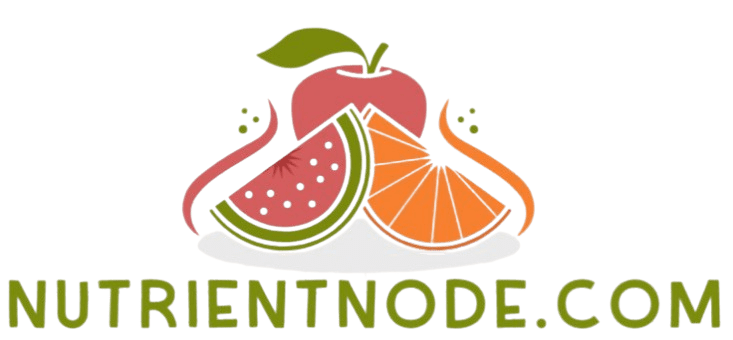How Cultural Factors Influence Dietary Guidelines
Dietary guidelines shape your nutrition and health. However, they are influenced by various cultural factors.
Cultural factors such as traditional foods, religious beliefs, and ethical considerations profoundly influence your eating habits and perceptions of nutrition. This article delves into the intricate relationship between culture and dietary guidelines, shedding light on both the positive and negative impacts on health. It also addresses the challenges of incorporating cultural diversity into these guidelines and offers strategies for creating more inclusive approaches.
Contents
- Key Takeaways:
- The Importance of Dietary Guidelines
- Cultural Factors that Influence Dietary Guidelines
- How Cultural Factors Impact Nutrition and Health
- Addressing Cultural Influences in Dietary Guidelines
- Frequently Asked Questions
- Q1. What are cultural factors that influence dietary guidelines?
- Q2. How do cultural norms and traditions impact dietary guidelines?
- Q3. Why is it important to consider cultural factors in dietary guidelines?
- Q4. How does geographical location impact dietary guidelines?
- Q5. Can cultural factors influence dietary guidelines in a negative way?
- Q6. How can understanding cultural factors help improve dietary guidelines?
Key Takeaways:

Cultural factors significantly shape dietary guidelines, impacting your nutrition and health. Embracing traditional foods and values is essential for making healthy choices that resonate with diverse communities.
The Importance of Dietary Guidelines
Dietary guidelines serve as vital frameworks that offer science-based recommendations for healthy eating. They profoundly influence health behaviors and disease prevention strategies across various populations.
These guidelines are meticulously crafted not only to promote optimal nutrition but also to cultivate cultural awareness among healthcare providers and registered dietitians. This helps make dietary practices resonate with the unique needs and preferences of diverse communities, paving the way for more effective and personalized nutritional approaches.
What are Dietary Guidelines and Why are They Important?
Dietary guidelines are your trusted roadmap to optimal health and well-being, offering standardized recommendations on the types and quantities of foods you should consume. These guidelines provide a solid framework for making informed nutritional choices. They emphasize essential elements like proper portion sizes, balanced food groups, and nutrient-dense options.
They are crucial in shaping your health behaviors, encouraging you to incorporate fruits, vegetables, whole grains, and lean proteins into your daily meals. This guidance plays an instrumental role in nutrition education, giving you the power to understand how your food selections impact your long-term health.
By adhering to these guidelines, you can significantly lower your risk of nutrition-related diseases, contributing to a healthier, more informed society.
Cultural Factors that Influence Dietary Guidelines
Cultural factors shape dietary guidelines by including traditional foods, eating patterns, and values that affect food choices in different communities. Understanding these elements is essential for appreciating how diverse cultural contexts impact nutrition and health decisions.
Traditional Foods and Eating Habits

Traditional foods and eating habits are intricately woven into the cultural beliefs and practices that shape your daily life and food choices. For instance, Mexican cuisine, with dishes like tamales and mole, plays a vital role in celebrations and family gatherings, encapsulating a sense of community and shared history.
In Indian culture, the diverse array of spices not only elevates flavors but also aligns with holistic wellness practices, advocating for balance in dietary habits. Turning to Middle Eastern cuisine, you encounter a vibrant tapestry of flavors, with staple ingredients like olive oil, legumes, and fresh vegetables that promote heart health and sustainability.
While these traditional foods offer a wealth of nutritional benefits, some may stray from modern dietary guidelines that emphasize reducing sodium and processed ingredients. This highlights the dynamic interplay between your culinary heritage and contemporary health awareness.
Religious and Ethical Beliefs
Religious and ethical beliefs play an important role in shaping dietary preferences and food choices, often leading to the embrace of specific dietary practices within various cultural groups.
Take Hinduism, for instance. Many followers adhere to vegetarianism as a reflection of ahimsa, the principle of non-violence, which extends compassion to all living beings.
On the other hand, Islamic dietary laws dictate that only halal foods may be consumed, highlighting the importance of food being prepared and processed according to specific guidelines, including humane slaughter practices.
For healthcare providers, understanding these diverse practices and their underlying philosophies is crucial. By understanding and respecting these diet rules, healthcare professionals can create more tailored nutrition education and effective dietary guidelines, fostering trust and promoting better health outcomes for individuals from various cultural backgrounds.
How Cultural Factors Impact Nutrition and Health
Cultural factors deeply influence nutrition and health. They shape aspects such as food availability and dietary variations.
These elements can either enhance well-being or lead to nutrition-related chronic diseases, demonstrating the intricate connection between culture and health decisions. Understanding this relationship is essential for making informed choices that promote a healthier lifestyle.
Positive and Negative Effects on Health
Cultural dietary practices can shape your health in profoundly positive or negative ways, depending on the nutritional quality of the foods you choose and the dietary elements prioritized within your specific cultural framework.
Take, for example, the Mediterranean diet. It’s abundant in omega-3 fatty acids from fish, nuts, and olive oil ingredients linked to lower rates of heart disease and enhanced cognitive function.
On the flip side, diets saturated with processed foods and sugar, common in certain Western cultures, present a risk for obesity and chronic illnesses like diabetes.
Recognizing these contrasts is essential for effective health promotion and patient education. It gives you the power to embrace healthier eating habits that resonate with your cultural preferences, highlighting the significance of whole foods and balanced nutrition over the allure of convenience and heavily processed options.
Addressing Cultural Influences in Dietary Guidelines

Addressing cultural influences in dietary guidelines is crucial for ensuring these guidelines are both relevant and practical for diverse populations.
By doing so, healthcare providers can effectively promote improved health outcomes tailored to the unique needs and preferences of various communities.
Challenges and Strategies for Inclusion
Incorporating cultural factors into dietary guidelines presents a range of challenges, including the necessity for research on diverse dietary practices and the complexities involved in altering established food habits.
To effectively tackle these challenges, you can dive deep into community insights through focus groups and surveys that spark open conversations, ensuring that dietary recommendations align with cultural traditions.
Nutrition education initiatives should be carefully crafted to emphasize the importance of integrating familiar foods into healthier eating patterns, rather than imposing changes that may seem foreign.
By fostering an atmosphere of community engagement and providing culturally relevant educational resources, you can help dismantle barriers and move toward health equity for all populations. Join the conversation and help influence dietary guidelines that respect cultural values!
Frequently Asked Questions
Q1. What are cultural factors that influence dietary guidelines?
Cultural factors refer to the beliefs, customs, and values of a particular group that shape their food choices and eating habits.
Q2. How do cultural norms and traditions impact dietary guidelines?

Cultural norms and traditions, such as religious practices and family customs, can greatly influence dietary guidelines by dictating which foods are considered acceptable or taboo.
In summary, integrating cultural influences into dietary guidelines is essential for fostering better health outcomes across diverse populations.
Q3. Why is it important to consider cultural factors in dietary guidelines?
Cultural factors are essential in dietary guidelines, as they affect the availability and acceptance of certain foods, including how the influence of technology on dietary guidelines shapes our choices.
They also influence individual preferences and behaviors.
Q4. How does geographical location impact dietary guidelines?
Geographical location impacts dietary guidelines significantly. It determines what foods are available and traditionally consumed.
This can shape the dietary practices of a region.
Q5. Can cultural factors influence dietary guidelines in a negative way?
Yes, cultural factors can lead to unhealthy eating habits. This includes overconsumption of specific foods and restrictive diets.
Such practices can negatively impact overall health and well-being.
Q6. How can understanding cultural factors help improve dietary guidelines?
Understanding cultural factors helps improve dietary guidelines. This leads to guidelines that are tailored to diverse populations.
Policymakers and health professionals can create more culturally appropriate and inclusive dietary recommendations.






